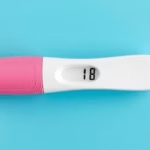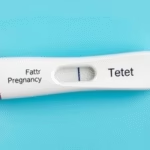Understanding Implantation Bleeding vs Period
In this article, we will be discussing the differences between images of implantation bleeding vs period. Implantation bleeding occurs when a fertilized egg attaches itself to the lining of the uterus, typically resulting in light spotting. This usually happens around the time of a woman’s expected period, which can often lead to confusion.
On the other hand, a period is the shedding of the uterine lining that occurs when there is no fertilization. Periods usually last for 3 to 7 days and can vary in flow and color considerably. Understanding the contrasting features of implantation bleeding and a regular period is vital for women who are trying to conceive or are concerned about their menstrual health. By examining various images, one can learn to distinguish between these two forms of bleeding, making it easier for individuals to manage their reproductive health.
Analyzing images of implantation bleeding vs period is crucial as it assists in recognizing the nuances of each type of bleeding, thus providing clarity on when medical consultation is necessary.
What is Implantation Bleeding?
Implantation bleeding is a phenomenon that can occur anywhere from 6 to 12 days after conception. When a fertilized egg implants itself into the uterine wall, it can result in a small amount of bleeding. This bleeding is often lighter and occurs for a shorter duration compared to menstrual bleeding.
Women often describe it as a light spotting that may be brown or pink in color. This is primarily due to the fact that the blood associated with implantation is usually older than menstrual blood, which often appears bright red. The amount of blood lost during implantation bleeding is typically very minimal, making it the subject of confusion when compared to the menstrual flow.
Understanding the timing and appearance of implantation bleeding is essential for women who are tracking their cycles and attempting to conceive. This bleeding can often be an early indication of pregnancy, especially when accompanied by other early pregnancy symptoms such as nausea, breast tenderness, or fatigue.
Recognizing the signs of implantation bleeding can help women make informed decisions about taking a pregnancy test and seeking medical advice if necessary.
Images of implantation bleeding can help in identifying the color, texture, and duration of the bleeding, aiding in better understanding.
Characteristics of a Menstrual Period
A menstrual period is a monthly occurrence in the reproductive cycle of women, marking the body’s preparation for a potential pregnancy. A regular menstrual cycle generally lasts between 21 to 35 days with bleeding lasting from 3 to 7 days. The flow can vary from light to heavy and undergoes shifts during each cycle.
During menstruation, the blood is typically bright red to dark red, and clots may sometimes be present. The color, flow amount, and duration can last longer than spotting associated with implantation bleeding. Factor in symptoms like cramps or bloating, which are common during periods, can also assist in distinguishing between the two types of bleeding.
Images of menstrual periods can range from light spotting at the beginning to heavier flow later on in the cycle. Understanding these variations is essential for better reproductive health management.
Being familiar with one’s own cycle and recognizing changes is important. It can help in identifying irregularities which should prompt medical consultation.
Furthermore, lifestyle factors, hormonal imbalances, and medical conditions can impact one’s menstrual cycle, further illustrating the importance of paying attention to these signs.
Identifying the Differences
Recognizing the differences between implantation bleeding and menstruation is key for women, especially for those trying to conceive. The two can sometimes appear quite similar, leading to confusion. The main differences lie in the timing, color, and consistency.
Implantation bleeding typically occurs about a week before a menstrual period is due. It appears as light spotting rather than the heavier flow of a period. Color varies from light pink to brown, while menstrual blood tends to be bright red or dark red. In addition, implantation bleeding is usually short-lived, lasting only a few hours to a couple of days, while periods last for several days.
In terms of symptoms, women may experience mild cramping with implantation bleeding but typically not the severe cramps often associated with menstruation. Understanding these differences can help women accurately interpret their bodies and make informed health decisions.
Images that depict the differences can greatly aid understanding, helping women to visualize what to look for.
Being able to decipher these signs significantly boosts one’s ability to track reproductive health and recognize the right time to seek consultation if needed.
Importance of Timing in Recognition
Timing is crucial in recognizing whether the bleeding is due to implantation or the onset of a menstrual period. Implantation bleeding generally appears about a week before a missed period. This can create confusion for women who are not tracking their cycles closely.
Understanding the menstrual cycle is critical in interpreting spotting. A menstrual cycle averages about 28 days but can vary significantly. By noting when menstruation usually occurs, women can better gauge whether unusual bleeding might signify implantation. For example, if bleeding occurs a few days before the expected period, it might suggest implantation.
Engaging in a regular tracking process—using apps or charts—can significantly enhance awareness of one’s menstrual cycle. Recognizing differences in timing allows one not just to detect early signs of pregnancy but also to identify potential issues that may require medical advice.
Images can provide insights into the timing and transition of bleeding, reinforcing understanding and awareness amongst women regarding their reproductive health.
Incorporating this knowledge into day-to-day life encourages personal health tracking, creating a proactive approach to menstrual and reproductive health.
How to Manage Misinterpretations
Misinterpretations between implantation bleeding and menstrual blood can create unnecessary stress and confusion. To reduce misinterpretation, it is essential to consider several factors: the timing of the bleeding, its appearance, and accompanying symptoms.
Women may wish to keep a journal of their cycles and symptoms to clarify what is occurring. Documenting the timing, color, and duration of bleeding aids in understanding one’s unique patterns and can be invaluable for discussions with healthcare providers.
If there is doubt about whether bleeding signifies implantation or the onset of a period, consider taking a pregnancy test. It is wise to wait until after a missed period for the most accurate results. Consulting with a healthcare professional can also provide clarity. They can assist with any questions or uncertainties regarding reproductive health.
Images presented in comparison can significantly aid in understanding what to look for regarding each type of bleeding, helping women to become more informed about their bodies.
Taking control of one’s reproductive health fosters confidence and knowledge, reducing the anxiety that comes from uncertainty.
When to Consult a Medical Professional
While most instances of implantation bleeding or menstruation do not pose health risks, women should consult a medical professional if they experience excessive bleeding, severe pain, or irregular cycles. Additionally, if there’s confusion over whether to interpret the bleeding as implantation or menstruation, professional advice can clarify the situation.
Monitoring overall menstrual health is essential for understanding what is normal for your body, and healthcare providers can offer personalized guidance suited to individual menstrual health. Key indicators for when to seek help include heavy bleeding that soaks through pads or tampons in an hour, blood clots larger than a quarter, or a sudden change in cycle length.
Images depicting bleeding patterns can assist women in recognizing when something is different or atypical, encouraging them to reach out for assistance.
Practicing open communication with healthcare providers about menstrual cycles and any unusual occurrences guarantees informed decisions about reproductive health.
Seeking medical advice enhances understanding and emphasizes the importance of being alert to one’s body’s needs.
Final Thoughts
Understanding the differences between implantation bleeding and menstruation is essential for women, especially those trying to conceive. Recognizing the timing, color, and flow can help to avoid confusion. Examining images that showcase both types of bleeding can assist in understanding these differences visually, which is tremendously beneficial.
Tracking one’s menstrual cycle is a valuable practice. It allows women to recognize patterns and changes in their bleeding, facilitating conversations with healthcare providers when necessary. Keeping a journal or using apps can significantly enhance awareness regarding reproductive health.
Consulting a medical professional remains important. Women should never hesitate to seek assistance if they are uncertain or if unusual bleeding patterns arise. Being proactive about health ensures that any potential issues can be addressed promptly. The availability of images depicting both implantation bleeding and menstrual bleeding holds great educational value, empowering women to interpret their body signals correctly.
In essence, awareness and understanding stand as critical components in navigating reproductive health and recognizing the nuances between implantation bleeding and a menstrual period. Empowerment through knowledge leads to better health outcomes and a deeper connection with one’s body.
Frequently Asked Questions
1. How can I tell if it’s implantation bleeding or a period?
Look for differences in timing, color, and flow. Implantation bleeding occurs about a week before a due period and is usually lighter and shorter in duration.
2. Is implantation bleeding a sign of pregnancy?
Yes, implantation bleeding can be an early sign of pregnancy as it occurs when a fertilized egg attaches to the uterus.
3. How long does implantation bleeding last?
Implantation bleeding typically lasts from a few hours to a couple of days.
4. Should I consult a doctor if I experience unusual bleeding?
Yes, if you experience heavy bleeding, severe pain, or any changes in your regular cycle, it is best to consult a healthcare professional.
5. Can images help identify the difference between implantation bleeding and menstruation?
Yes, comparing images can provide visual guidelines, aiding in recognizing the differences between these two types of bleeding.
Further Reading
What Type of Psychotherapy Is Best for Anxiety?







